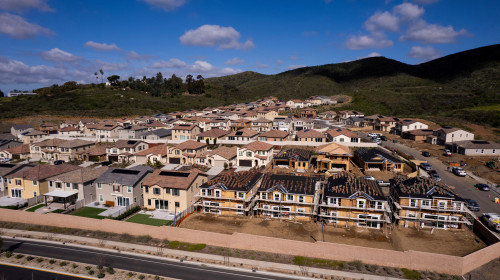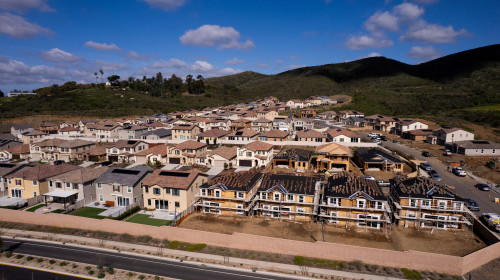WASHINGTON (Reuters) – U.S. homebuilder sentiment tumbled to a five-month low in February amid worries that tariffs on imports would combine with higher mortgage rates to further drive up housing costs.
The National Association of Home Builders/Wells Fargo Housing Market Index plunged five points to 42 this month, the lowest reading since September. That erased all the gains that were notched in the aftermath of President Donald Trump’s election victory in November, when sentiment had risen in anticipation of a less-stringent regulatory environment
Trump in his first weeks in office slapped an additional 10% tariff on imported goods from China. A 25% levy on imports from Mexico and Canada was suspended until March. Trump this month raised tariffs on steel and aluminum imports to 25%.
New home construction is heavily reliant on imported materials, including lumber, as well as other goods like household appliances. The decline in homebuilder sentiment mirrored a decrease in consumer sentiment. Tariffs have also rattled consumers.
“While builders hold out hope for pro-development policies, particularly for regulatory reform, policy uncertainty and cost factors created a reset for 2025 expectations in the most recent HMI,” said NAHB Chairman Carl Harris. The survey’s measure of current sales conditions fell four points to a five-month low of 46. A gauge of sales expectations in the next six months plunged 13 points to 46, the lowest level since December 2023. Its measure of prospective buyers traffic slipped three points to 29.
“With 32% of appliances and 30% of softwood lumber coming from international trade, uncertainty over the scale and scope of tariffs has builders further concerned about costs,” said NAHB Chief Economist Robert Dietz. “Addressing the elevated pace of shelter inflation requires bending the housing cost curve to enable adding more attainable housing.”
The nation is facing a housing shortage, which has boosted rents and contributed to elevated inflation.
The average rate on the popular 30-year fixed-rate mortgage is hovering just under 7%. Residential spending rebounded in 2024, lifted by single-family home construction as builders took advantage of a shortage of previously owned homes for sale.
(Reporting by Lucia Mutikani; Editing by Andrea Ricci)


